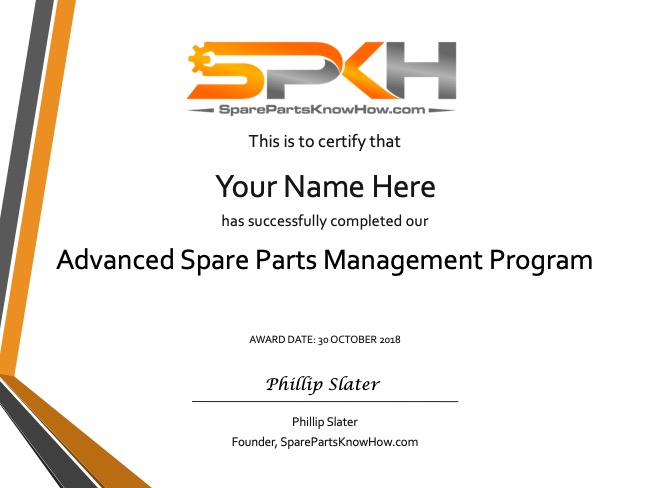The following content was generated using Perplexity AI and is posted here as an exhibit for the main article discussing AI and spare parts management.
Click here to go to the main article.
My query was, ‘Write 500 words on spare parts management‘
Here’s is what was produced.
Spare parts management is a critical aspect of any organization that relies on machinery or equipment to operate.
It involves the process of managing and optimizing the inventory of spare parts required for maintenance and repair of equipment. Effective spare parts management ensures that the right parts are available at the right time, in the right quantity, and at the right cost.
In this article, we will discuss some tips for managing and optimizing spare parts inventory.
- Define the inventory policy: The first step in spare parts management is to define the inventory policy. This includes determining the minimum and maximum inventory levels, reorder points, and lead times. The inventory policy should be based on the criticality of the equipment, the frequency of maintenance, and the availability of the parts.
- Categorize the parts: Categorizing the parts based on their criticality and usage is essential for effective spare parts management. Parts can be classified as critical, essential, or non-essential. Critical parts are those that are required for the equipment to operate, while essential parts are those that are required for maintenance. Non-essential parts are those that are not required for maintenance or operation.
- Implement a centralized inventory system: A centralized inventory system ensures that all spare parts are stored in a single location. This makes it easier to manage and track inventory levels, reduce the risk of stockouts, and improve overall inventory accuracy.
- Use a computerized maintenance management system (CMMS): A CMMS is a software system that helps organizations manage their maintenance operations. It can be used to track spare parts inventory levels, generate work orders, and schedule maintenance activities.
- Conduct regular audits: Regular audits of spare parts inventory can help identify obsolete or excess inventory, reduce the risk of stockouts, and improve overall inventory accuracy. Audits should be conducted at least once a year and should include a physical count of all spare parts.
- Train employees: Training employees on spare parts management is essential for ensuring that everyone understands their roles and responsibilities. This includes training on inventory policies, procedures, and the use of the CMMS.
- Monitor performance: Regularly monitoring spare parts inventory performance is essential for identifying areas for improvement. This includes tracking inventory accuracy, stockouts, and lead times.
- Embrace proactive maintenance: Transitioning from a reactive maintenance strategy to a proactive maintenance strategy can help reduce the need for spare parts and improve overall equipment reliability. This includes implementing a preventive maintenance program and conducting regular equipment inspections.
- Optimize the supply chain: Optimizing the supply chain can help reduce lead times and improve overall inventory accuracy. This includes working with suppliers to improve delivery times, implementing vendor-managed inventory programs, and using just-in-time inventory management.
In conclusion, effective spare parts management is essential for ensuring that equipment is maintained and repaired in a timely and cost-effective manner. By following these tips, organizations can optimize their spare parts inventory, reduce the risk of stockouts, and improve overall equipment reliability.
global.hitachi-solutions.com/blog/spare-parts-inventory-management/
www.growmax.io/blog/what-is-spares-parts-management
www.plantengineering.com/articles/spare-part-inventory-for-maintenance-organizations-is-critical/
www.getmaintainx.com/blog/improve-spare-pare-part-inventory-management/
www.researchgate.net/publication/349654272_Spare_Parts_Inventory_Management_A_Literature_Review
100% online
Study at a pace and place that suits you
Study at a pace and place that suits you
 The Advanced Spare Parts Management Course covers all the issues faced during the spare parts inventory management lifecycle.
The Advanced Spare Parts Management Course covers all the issues faced during the spare parts inventory management lifecycle.
Completing this course equips you with the know-how and skills to effectively manage all aspects of spare parts inventory.
The course specifically focusses on MRO and spare parts that are held in support of equipment operations and maintenance.
Posted by Phillip Slater